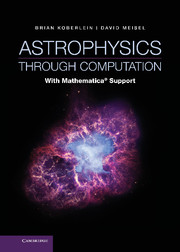
You may find chapter 12 of Carroll and Ostlie ( Introduction to Modern Astrophysics) helpful for background reading on star formation. (Note that the observational details are very dated, but the theoretical description is good.) You may also find it instructive to skim through chapters 14 (Accretion onto Black Holes), 15 (Accretion onto Neutron Stars and White Dwarfs), and 16 (Gravitational Radiation).Ĭhapter 13 on Compact X-ray Sources in Shapiro and Teukolsky, and skim through chapters 14 (Accretion onto Black Holes), 15 (Accretion onto Neutron Stars and White Dwarfs), and 16 (Gravitational Radiation). Read chapter 13 on Compact X-ray Sources in Shapiro and Teukolsky. Gravitational Radiation (Guest Lecturer: Ryan Lang) Sun as a Star (Guest Lecturer: Justin Kasper) Shapiro and Teukolsky, chapters 9 and 10. You will also find it useful to read Sections 2.6-2.8 and 2.11.2 in Hansen, Kawaler, and Trimble, as well as chapters 5, 12, and 18 in Shapiro and Teukolsky. "How Massive Stars End Their Life." Astrophys J 591, no. Model of Active Galactic Nuclei 1121 28.3 Radio Lobes and Jets 1137 28.4 Using Quasars to Probe the Universe 1145 Chapter 29 Cosmology 1160 29.1 Newtonian Cosmology 1160 29.2 The Cosmic Microwave. Ostlie, available from the Library of Congress.

Hansen, Kawaler, and Trimble, sections 2.7-2.15 and chapter 10. Table of Contents for An introduction to modern astrophysics / Bradley W. Upper Main Sequence: Evolution of Massive Stars You can also read more about White Dwarf Properties, Cooling, and Crystallization Physics in chapter 10 of Hansen, Kawaler, and Trimble, as well as in chapters 3-4 of Black Holes, White Dwarfs, and Neutron Stars by Shapiro and Teukolsky. Hansen, Kawaler, and Trimble, chapter 2, sections 3.5-3.6 and 9.3.įinish reading the rest of chapter 2 (sections 2.7-2.15) on Stellar Evolution in Hansen, Kawaler, and Trimble. Hansen, Kawaler, and Trimble, chapter 2, sections 3.5-3.6, and section 9.3. For a deeper discussion, you can consult chapters 2-3 of Black Holes, White Dwarfs, and Neutron Stars by Shapiro and Teukolsky. You may also find it useful to review sections 3.5-3.6 on Degenerate Equations of State. Hansen, Kawaler, and Trimble, chapters 2, 6, and 7.įinish reading the first part of chapter 2 (sections 2.1-2.6) on Stellar Evolution in Hansen, Kawaler, and Trimble, and also read section 9.3 on the Solar Neutrino Problem. (You should still do this reading prior to the midterm exam, however.) (I encourage you to at least skim through the rest of chapter 7 as well.) We will also start covering the material in chapter 2 (sections 2.1-2.5), although homework problems on this material will be on Problem Set 5.

Hansen, Kawaler, and Trimble, chapter 6, chapter 7 (sections 7.1-7.2). Hansen, Kawaler, and Trimble, chapters 4 and 5. You should also at least look through chapter 5 on Convection. Hansen, Kawaler, and Trimble, chapter 4 (including section 4.8). If you are interested in additional reading about the Saha Equation, you may also consult chapter 14 of Stellar Structure and Evolution by R. You may also find it useful to read chapter 8 in Carroll and Ostlie. Hansen, Kawaler, and Trimble, chapter 3, especially section 3.4. You may also find Carroll and Ostlie, chapter 7 useful for background on stellar binaries.


 0 kommentar(er)
0 kommentar(er)
